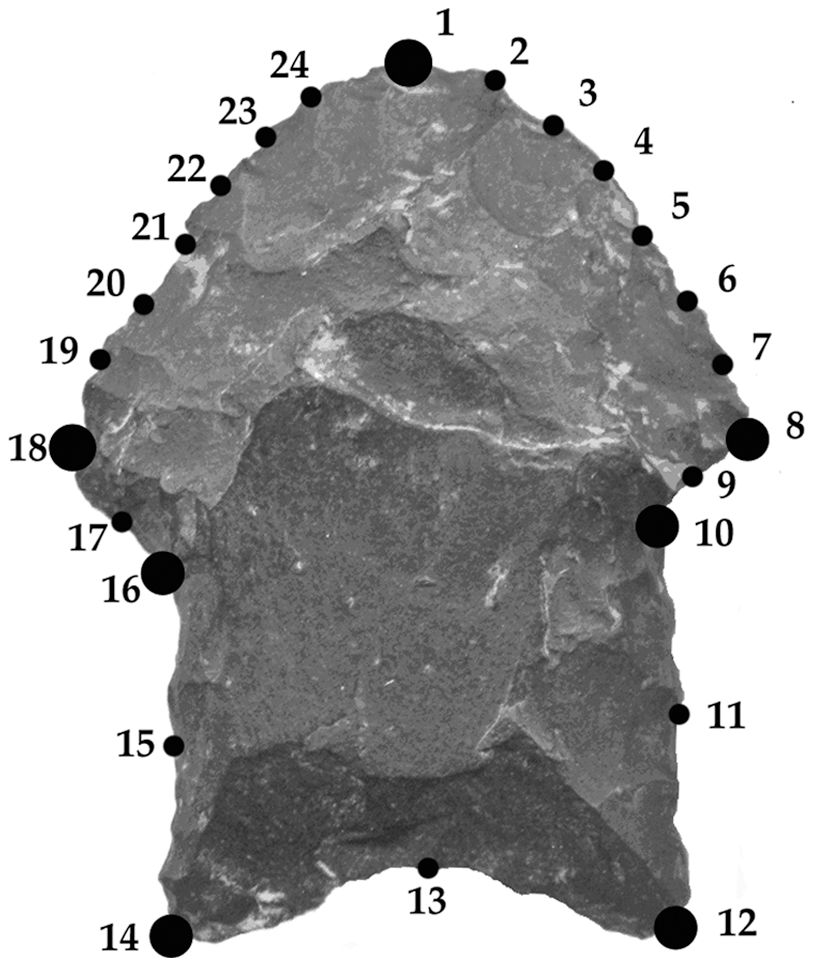Worth a Thousand Words
How many arrows are depicted in the photo above? How many can you find? One? Five?
The answer is 118.
In research published last week, researchers digitally compiled 118 different lithic points from the Patagonia region of South America. All samples date back to the Late Holocene period and — the researchers posit — were made using other arrows, spears, and points. The study examined the design of these points and aimed to determine whether they can be seen as working in a modular system comprised of the blade (e.g., the arrow) and the stem (e.g., the arrow shaft).
The image above is Figure 1 in the manuscript. And as you can see, the researchers labeled twenty-four parts, or “landmarks”, of the composite image. These points or landmarks helped in measuring the image’s shape, angles, and proportions.
To learn more about this image and read the full text of the study, click here.
Citation: González-José R, Charlin J (2012) Relative Importance of Modularity and Other Morphological Attributes on Different Types of Lithic Point Weapons: Assessing Functional Variations. PLoS ONE 7(10): e48009. doi:10.1371/journal.pone.0048009
http://en.wikipedia.org/wiki/Modular_design

